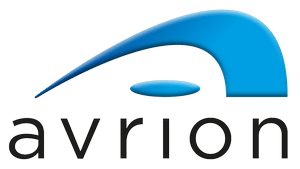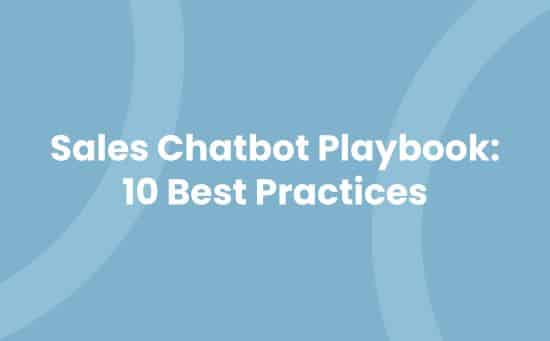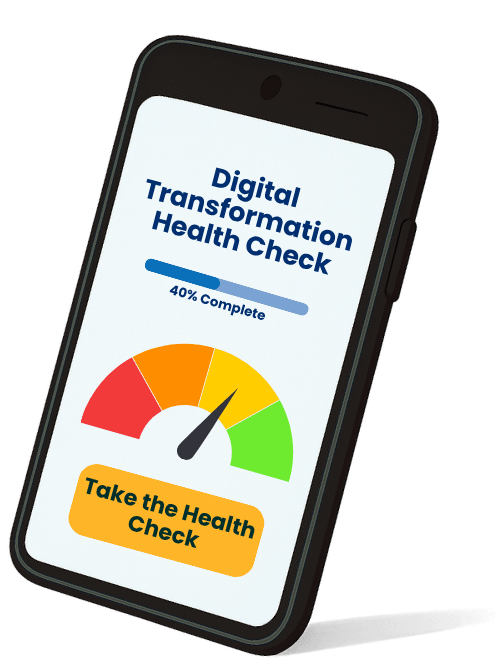Key Takeaways
- Sales chatbots can significantly improve business metrics, with up to 90% reduction in lead response time and 35% increase in customer engagement
- Successful chatbot deployment requires clear business objectives, careful platform selection, and seamless integration with existing CRM systems
- Natural conversation flows, comprehensive response libraries, and effective fallback options are crucial for optimal chatbot performance
- Regular monitoring of KPIs, including conversion rates, engagement metrics, and technical performance, enables data-driven optimisation
- Proper staff training and established support protocols are essential for maximising chatbot adoption and maintaining high-quality customer interactions
Exploring today’s digital sales world feels like steering a ship through foggy waters. Your sales team works tirelessly but still struggles to respond to every lead promptly. That’s where sales chatbot deployment best practices come into play – your digital first mate ready to transform customer engagement around the clock.
Picture this: while your sales team sleeps your chatbot engages prospects qualifying leads and scheduling meetings. It’s like having a tireless assistant who never takes breaks. Our data shows businesses using optimised chatbots see a 35% increase in qualified leads and a 28% reduction in response times.
But here’s the catch – deploying a chatbot isn’t just about installing software and hoping for the best. You’ll need a strategic approach to avoid the common pitfalls that leave many businesses with underperforming chatbots. Let’s explore how to make your chatbot a valuable member of your sales team.
Understanding Sales Chatbots and Their Business Impact
Sales chatbots transform customer interactions through AI-powered conversations that automate lead qualification and sales processes. These digital assistants operate 24/7 to engage prospects through natural language processing capabilities.
Key Benefits of Sales Chatbot Implementation
Sales chatbots deliver measurable improvements across multiple business metrics:
| Metric | Impact |
|---|---|
| Lead Response Time | Reduced by 90% |
| Customer Engagement | Increased by 35% |
| Sales Team Productivity | Improved by 45% |
| Cost per Lead | Decreased by 30% |
Chatbots integrate seamlessly with existing CRM systems like Salesforce to:
- Generate qualified leads through automated scoring algorithms
- Schedule meetings without human intervention
- Collect valuable customer data for personalised follow-ups
- Route high-priority prospects to available sales representatives
- Track customer interactions across multiple touchpoints
Common Sales Chatbot Use Cases
Modern sales chatbots excel in specific business scenarios:
- Lead Qualification
- Asking pre-qualification questions
- Scoring leads based on responses
- Routing qualified prospects to sales teams
- Collecting contact information
- Product Recommendations
- Presenting relevant solutions based on customer needs
- Showcasing product features through interactive demos
- Providing pricing information
- Offering complementary product suggestions
- Meeting Scheduling
- Checking sales representative availability
- Booking appointments automatically
- Sending calendar invitations
- Following up with reminders
- Post-Sale Support
- Answering frequently asked questions
- Processing simple service requests
- Directing complex queries to support teams
- Gathering customer feedback
Learn more about optimising your sales processes with AI-powered automation solutions that enhance customer experience while reducing operational costs.
Essential Pre-Deployment Planning Steps
Successful sales chatbot deployment requires meticulous planning and strategic implementation to maximise return on investment. The initial planning phase encompasses defining objectives and selecting appropriate technology solutions.
Defining Clear Business Objectives
Sales chatbot implementation starts with establishing precise objectives that align with your organisation’s sales strategy. Essential objectives include:
- Lead Qualification Metrics: Set specific targets for lead qualification rates and conversion benchmarks
- Response Time Goals: Define acceptable response times for customer queries and lead follow-ups
- Integration Requirements: Map out connections with existing CRM systems and sales tools
- Performance Indicators: Establish measurable KPIs for tracking chatbot effectiveness
- Resource Allocation: Determine the necessary human and technical resources for deployment
Creating a detailed objectives framework enables precise measurement of chatbot performance against business goals. This structured approach facilitates:
- Accurate tracking of ROI metrics
- Clear communication of expectations to stakeholders
- Efficient allocation of resources throughout deployment
- Strategic alignment with sales processes
Selecting the Right Chatbot Platform
Platform selection directly impacts the success of your sales chatbot implementation. Key evaluation criteria include:
- Technical Capabilities:
- Natural Language Processing accuracy
- Integration capabilities with existing systems
- Customisation options for sales processes
- Scalability features for growing businesses
- User Experience Features:
- Intuitive interface for sales team management
- Easy configuration of conversation flows
- Real-time analytics dashboard
- Multi-channel deployment options
The chosen platform must demonstrate:
- Compatibility with your CRM system
- Support for complex sales workflows
- Robust security features
- Proven reliability in similar deployments
Learn more about CRM integration
Best Practices for Chatbot Configuration
Sales chatbot configuration requires careful attention to conversation design, response management, and error handling to maximise effectiveness. Strategic setup ensures optimal performance and user satisfaction across all interactions.
Designing Natural Conversation Flows
Creating natural dialogue paths enhances user engagement and improves conversion rates. Map out conversation flows based on common sales scenarios, such as product inquiries, pricing questions or booking demonstrations. Incorporate personalisation tokens to address users by name and reference their previous interactions.
Key elements for natural conversations include:
- Starting with open-ended questions to gather context
- Using progressive disclosure to avoid overwhelming users
- Adding personality traits that match your brand voice
- Including contextual follow-up questions based on user responses
- Implementing pauses between messages to mimic human typing
Setting Up Response Libraries
Response libraries form the foundation of consistent and accurate chatbot communication. Create categorised response templates for frequent queries, objection handling and product information. Update these libraries regularly based on conversation analytics and user feedback.
Essential response categories:
- Product specifications and feature comparisons
- Pricing plans and payment options
- Technical support solutions
- Meeting scheduling protocols
- Lead qualification questions
Creating Effective Fallback Options
Fallback mechanisms prevent user frustration when chatbots encounter unfamiliar queries. Carry out a tiered fallback system that maintains engagement while directing users to appropriate resources or human support.
Strategic fallback approaches:
- Primary level: Asking users to rephrase their question
- Secondary level: Offering alternative support channels
- Tertiary level: Connecting to live agents during business hours
- Emergency protocols: Providing urgent contact information
- Knowledge base links: Directing to relevant help articles
Learn more about chatbot implementation
Explore AI-powered sales automation
Integration with Existing Sales Systems
Sales chatbot integration demands seamless connectivity with existing business systems to maximise operational efficiency. The implementation process focuses on establishing robust connections between your chatbot platform and current sales infrastructure.
CRM and Sales Tool Integration
Successful chatbot deployment relies on effective integration with Customer Relationship Management (CRM) systems. HubSpot Sales Chatbot connects directly with popular CRM platforms to synchronise customer data instantly. The integration enables:
- Automated Data Sync: Records customer interactions automatically in your CRM
- Lead Scoring Automation: Updates lead scores based on chatbot conversations
- Meeting Scheduling: Links with calendar systems for immediate appointment booking
- Email Marketing Connection: Integrates with email platforms for follow-up campaigns
Salesforce integration creates a unified data flow between chatbot interactions and sales processes. Your sales team receives real-time notifications about qualified leads while maintaining complete conversation history.
Data Security Considerations
Data protection measures safeguard sensitive information during chatbot interactions. Modern chatbot platforms incorporate multiple security layers:
- Encryption Protocols:
- End-to-end encryption for all communications
- SSL/TLS certificates for secure data transmission
- Encrypted storage for conversation logs
- Access Controls:
- Role-based permissions for team members
- Two-factor authentication
- IP whitelisting options
- Compliance Features:
- GDPR-compliant data handling
- Automated data retention policies
- Regular security audits
Botpress offers enterprise-grade security features specifically designed for sales chatbots. The platform monitors suspicious activities ensures data compliance with regional regulations.
Measuring Chatbot Performance
Sales chatbot performance metrics enable data-driven optimisation through continuous monitoring of key indicators alongside regular analysis of conversation patterns.
Key Performance Indicators
Track these essential metrics to evaluate your sales chatbot’s effectiveness:
Engagement Metrics
- Conversation completion rate: percentage of chats reaching desired outcomes
- Average session duration: time users spend interacting with the chatbot
- Response time: speed at which the chatbot replies to user queries
- Bounce rate: percentage of users who leave after initial interaction
Lead Generation Metrics
- Conversion rate: percentage of conversations resulting in qualified leads
- Lead quality score: assessment of lead potential based on predefined criteria
- Meeting scheduling success: rate of successful appointment bookings
- Form completion rate: percentage of users completing contact forms
Technical Performance
- Error rate: frequency of incorrect responses or failed interactions
- Fallback rate: instances where chatbot transfers to human agents
- System uptime: percentage of time chatbot remains operational
- API integration success: rate of successful data exchanges with CRM systems
Optimising Based on Analytics
Transform chatbot analytics into actionable improvements:
- Conversation Flow Analysis
- Review chat transcripts to identify common user paths
- Optimise dialogue branches with highest engagement
- Eliminate redundant conversation steps
- Add new responses for frequently asked questions
- Response Refinement
- Update answer templates based on user feedback
- Enhance natural language processing accuracy
- Carry out A/B testing for different response formats
- Adjust tone and language to match successful interactions
- Integration Enhancement
- Monitor CRM data synchronisation efficiency
- Streamline lead scoring algorithms
- Improve handoff protocols to sales teams
- Update API connections for better data flow
Link: Learn more about chatbot analytics on HubSpot
Staff Training and Change Management
Effective sales chatbot deployment requires comprehensive staff training programmes tailored to maximise adoption rates across sales teams. Training focuses on enabling teams to leverage chatbot capabilities while maintaining personalised customer interactions.
Preparing Sales Teams
Sales teams integrate chatbots seamlessly through structured onboarding processes focused on practical application. Teams learn to:
- Monitor chatbot interactions in real-time using dashboard analytics
- Interpret lead qualification scores generated by the AI system
- Access conversation histories to personalise follow-up communications
- Utilise automated meeting scheduling features within their existing workflows
- Customise chatbot responses based on customer segments
Sales representatives receive hands-on training with HubSpot’s chatbot platform to understand response patterns. Regular feedback sessions help identify areas where the chatbot requires refinement based on actual customer interactions.
Establishing Support Protocols
Support protocols create clear escalation paths when chatbots encounter complex queries requiring human intervention. Key protocol elements include:
- Defined trigger points for human handover based on conversation complexity
- Response time standards for escalated conversations (15 minutes during business hours)
- Documentation requirements for tracking resolution paths
- Quality assurance checks on chatbot-to-human transitions
- Regular audits of chatbot performance metrics
Teams connect with Salesforce Service Cloud to manage escalations efficiently. Support protocols integrate with existing CRM workflows to maintain consistent customer experience standards across all interaction channels.
Sales managers receive weekly analytics reports highlighting:
| Metric | Target Range |
|---|---|
| Chatbot Resolution Rate | 75-85% |
| Human Escalation Time | <15 minutes |
| Customer Satisfaction | >85% |
| Response Accuracy | >90% |
These protocols ensure smooth operations while maintaining high service quality through automated and human-assisted interactions.
Conclusion
Sales chatbots represent a powerful tool for transforming your sales operations and enhancing customer engagement. By following these deployment best practices you’ll set your business up for success with AI-powered automation that delivers measurable results.
Remember, successful chatbot implementation isn’t a one-time task but an ongoing process of refinement and optimisation. Your commitment to strategic planning careful integration and continuous performance monitoring will determine the long-term effectiveness of your chatbot solution.
Take the first step today toward revolutionising your sales process with intelligent chatbot technology. Your team and your customers will thank you for embracing this game-changing solution that’s reshaping the future of sales automation.
Frequently Asked Questions
What are sales chatbots and how do they work?
Sales chatbots are AI-powered digital assistants that engage with prospects through natural language conversations. They work 24/7 to qualify leads, schedule meetings, and provide product information automatically. These chatbots use natural language processing to understand user queries and respond appropriately, integrating with CRM systems to manage data efficiently.
How much can sales chatbots improve lead response time?
According to the data, implementing sales chatbots can reduce lead response time by up to 90%. This dramatic improvement occurs because chatbots are available round-the-clock and can instantly engage with potential customers, unlike human sales teams who may be unavailable or busy.
What are the key benefits of implementing sales chatbots?
Sales chatbots offer multiple benefits: 35% increase in customer engagement, 45% improvement in sales team productivity, and 30% reduction in cost per lead. They also provide 24/7 availability, automated lead qualification, and seamless integration with existing CRM systems.
How do sales chatbots integrate with CRM systems?
Sales chatbots integrate directly with CRM platforms like Salesforce and HubSpot, enabling automated data syncing, lead scoring, and meeting scheduling. This integration ensures unified data flow, real-time notifications, and automated email marketing connections whilst maintaining data security.
What metrics should be tracked to measure chatbot performance?
Key performance indicators (KPIs) for chatbot performance include engagement metrics (conversation rates, user satisfaction), lead generation metrics (qualified leads, conversion rates), and technical performance indicators (response time, error rates). Regular monitoring of these metrics enables data-driven optimisation.
How should sales teams be trained to work with chatbots?
Sales teams need comprehensive training through structured onboarding processes that cover monitoring interactions, interpreting lead qualification scores, and customising responses. Regular support protocols and weekly analytics reports help ensure smooth operations and maintain high service quality.
What security measures do sales chatbots implement?
Modern sales chatbots employ robust security measures including encryption protocols, access controls, and compliance features to protect sensitive information. They ensure secure data handling whilst maintaining seamless integration with existing business systems.
How can businesses ensure successful chatbot deployment?
Successful chatbot deployment requires meticulous planning, clear business objectives, and selecting the right platform based on technical capabilities. Businesses should focus on conversation design, response management, and establishing effective fallback options for unfamiliar queries.



